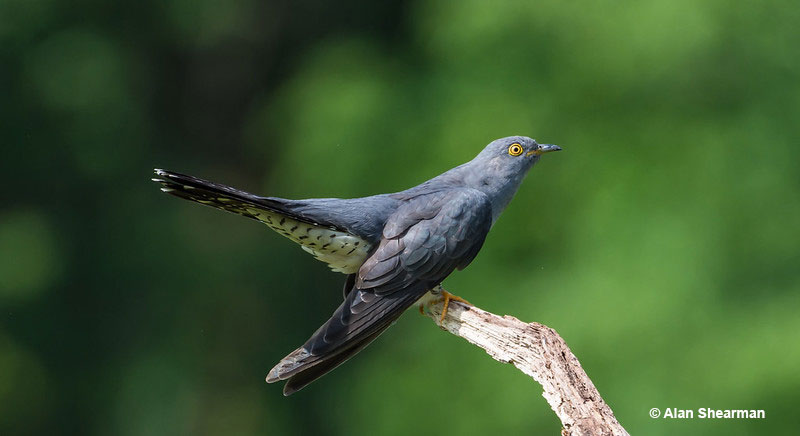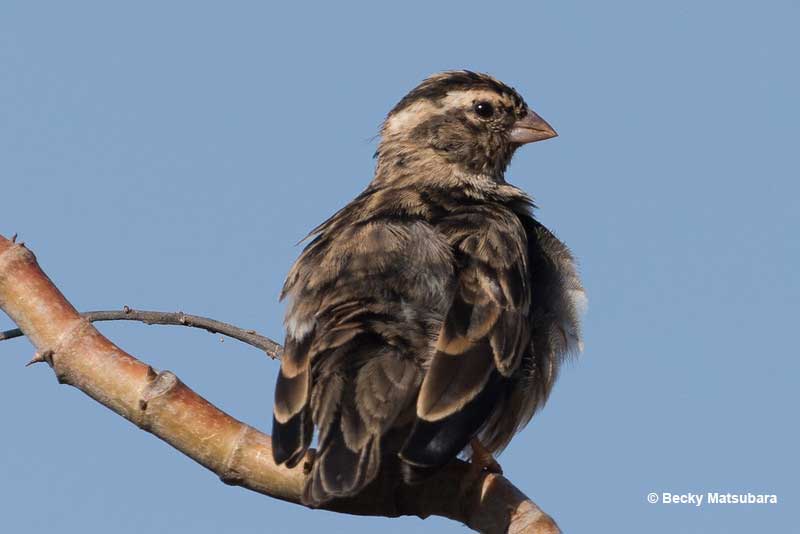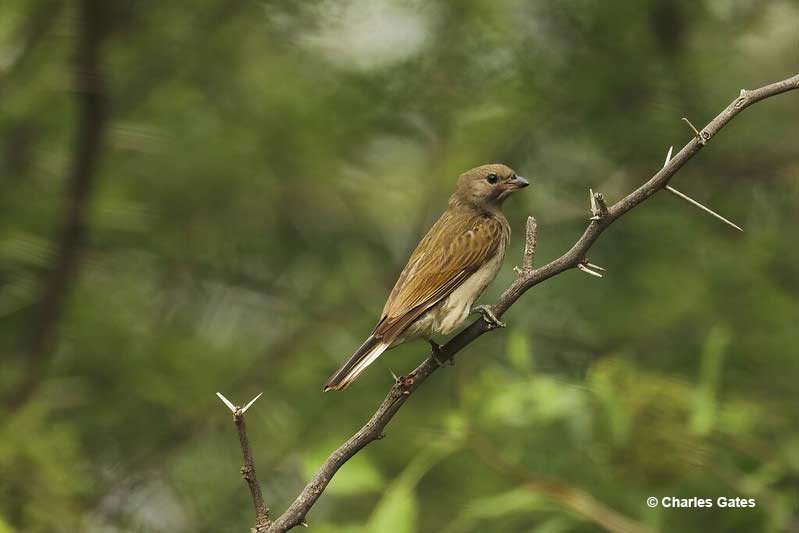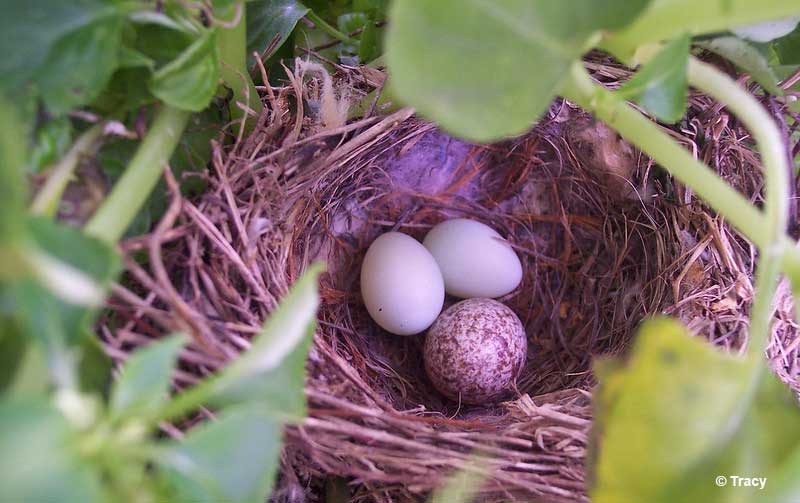
In the human mind, birds are connected to many noble stereotypes. The beauty of their plumage and birdsongs, the loyalty and dedication towards their partners and offspring are just some traits that make them so dignified in our eyes.
What if I told you that birds also rob, steal, cheat, and even use mob strategies?
However, there is nothing inherently wrong with these “bad” bird behaviors. From an evolutionary standpoint, they stem from the struggle to pass on the genes to the next generation, using the best strategies at the moment.
Indeed, the drive to win over the best mate and reproduce has led to astounding adaptations in many bird species. Believe it or not, some forms of parasitism are among them – like brood parasitism and kleptoparasitism.
Brood Parasitism
Brood parasitism occurs when one creature manipulates another to raise its young like its own. The brood parasitic bird makes their hosts the involuntary foster parents of their offspring, offsetting all the “costs” of raising chicks.
By practicing parasitism, brood parasites don’t have to invest time and energy into nest building, finding food, or providing warmth. Instead, they can focus on laying as many eggs as possible in suitable host nests.
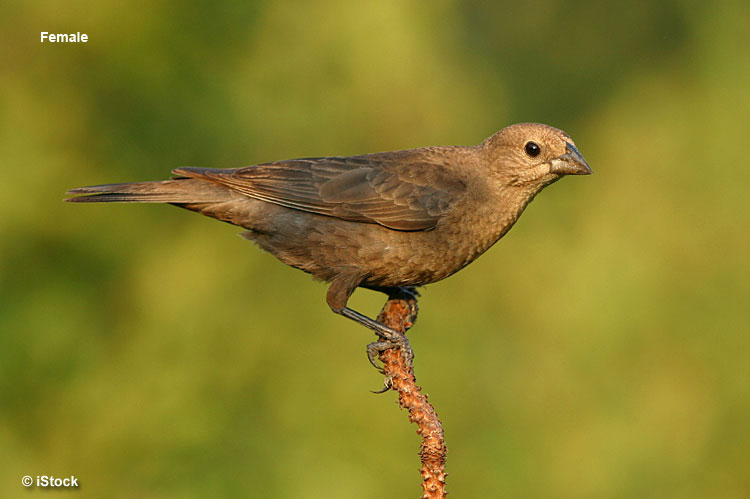
Brown-headed Cowbird is one of the most notorious brood parasites in the U.S. Female pictured here.
The parasitic chicks are also a force to reckon with. The chicks of obligate brood parasites such as cuckoos and cowbirds hatch earlier than their “step-siblings” and grow faster, giving them an instant advantage and a chance to gather more food from their fosters. Also, they often use this advantage to push their host’s true offspring out of the nest or even kill them by stabbing them.
Related: What does seeing a dead bird mean?
Although the brood parasitism phenomenon is pretty (in)famous, just over 100 bird species – a mere 1% – practice brood parasitism to raise their young.
Why Does Brood Parasitism Happen?
How brood parasitism came to be is a complex question. Currently, there is no consensus about it. The most popular theory is that it first occurred among the birds of the same species nesting in colonies. Some females would occasionally opportunistically lay eggs in another female’s nest.
A common knowledge is that parasitic birds like cuckoos and cowbirds simply plant their egg in the host nest, and that’s it. But, why would intelligent and social creatures like (host) birds put up with having their own offspring pushed out and killed only to invest all the energy into the parasite’s baby?
It turns out that the story is much more complex than we thought. Some host birds recognize fraudulent eggs in the first place. Some do acknowledge that something’s wrong with the egg and sometimes remove it, but can’t help responding to the mimicking calls of their “parasite” chick. And interestingly, some host parents are afraid of retaliation – more on that in a second.
The Bird Mafia
For a long time, we thought that brood parasites were done with their duties and moved on as soon as they lay an egg. On the other hand, the acceptance of parasite eggs by hosts seemed almost puzzling.
Then, a surprising discovery came to light. It turned out that at least a portion of birds, like Cuckoos and Cowbirds continue to keep an eye on the host nests. If host parents dare to remove the apparent deceitful egg, the parasite parent may trash the nest and destroy the entire litter.
Thus, it pays off for host parent birds to nurture the parasitic chick because they could still manage to raise some chicks of their own (if they’re lucky to avoid getting pushed out or killed by their phony “sibling”).
This “mafia hypothesis” was controversial for a long time until it was experimentally proven. Still, it is not universally accepted in terms of its evolutionary significance.
The Killer Sibling
The violence of brood parasites doesn’t end with parent birds. The chicks of some species ensure their own survival literally over the dead bodies of their adoptive siblings.
In Old-World cuckoos, including the Common Cuckoo (Cuculus canorus), the cuckoo chick will push out host eggs or chicks out of the nest. This task is not always easy, so the young cuckoo will use deliberate action such as hoisting the host’s eggs or chicks onto its back and tipping them out of the nest.
Things get even more morbid with Honeyguides (Indicatoridae) of Africa and Asia and the Neotropic Striped Cuckoo (Tapera naevia). Their chicks hatch with specially modified bill hooks that have only one purpose – to attack and stab their in-nest competitors. The grim adaptation occurred because you can’t push a sibling out if nesting in a cavity. Yikes.
Most Common Brood Parasites
Brown-headed Cowbird
Brown-headed Cowbird (Molothrus ater) is North America’s most common avian brood parasite. The specific name of this blackbird relative stems from the fact they followed bison herds and then cattle herds because of the associated insects they feed on (so obviously, cowbirds are not cow parasites).
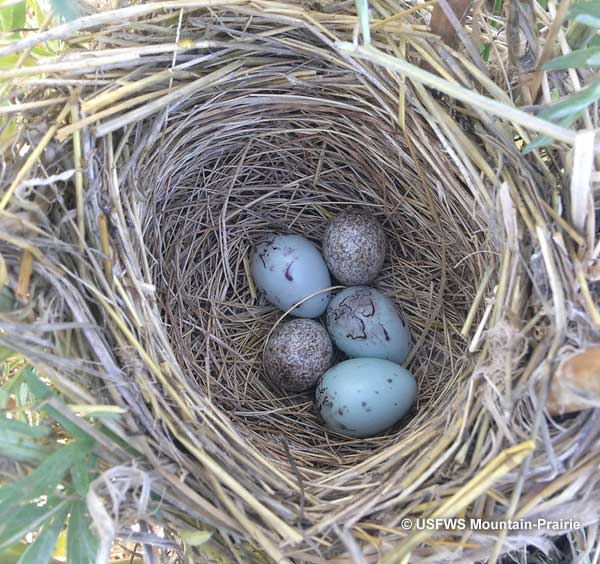
Cowbirds are not particular about their hosts – over 140 host species have been noted, with a preference for nests containing eggs smaller than their own. Because the female can focus solely on egg laying, she can lay 30-40 eggs during the breeding season (which lasts only 2-3 months!). The eggs are bluish-green, heavily spotted, and often notably different from their host’s.
The unfortunate hosts include Song Sparrows, Chipping Sparrows, Yellow Warblers, and Red-winged Blackbirds, but also endangered species like Black-capped Vireo and Kirtland’s Warbler. Even birds as small as Kinglets can end up in the Brown-headed Cowbird scheme.
What is the problem with cowbirds?
Despite being a native species, many people consider Brown-Headed Cowbirds a nuisance due to their abundance, success, and negative impact on other birds.
Before European settlement, they were found only in the open short-grass prairies of the Midwest. However, after large-scale deforestation, the expansion of cattle ranching, and other activities that conveniently benefited the Cowbird, the range grew rapidly. In two centuries, they’ve colonized all the lower 48 states and southern Canada.
Until recently, their populations were increasing dramatically, possibly due to increases in food supply (residual agricultural grain) and reproductive success from finding new, vulnerable host species.
Shiny Cowbird
Shiny Cowbird (Molothrus bonariensis) is found in grassy areas of the Caribbean and South America and is commonly associated with livestock. The male is shiny blue-black, and the female is grayish-brown. It feeds on the ground and perches in trees and shrubs. The slender, pointed bill sets it apart from other cowbirds.
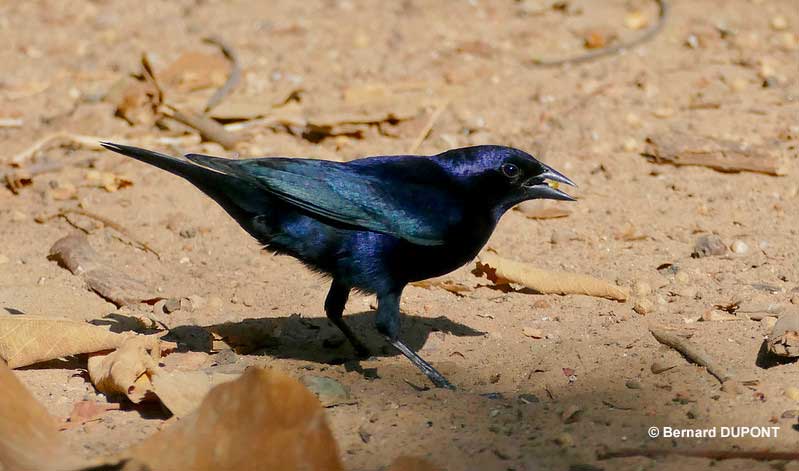
Behavior-wise, you could say that the Shiny Cowbird is the Brown-headed Cowbird’s South American double. It is also a generalist obligate brood parasite, using nests of many other common bird species. It also relies on high fecundity – producing a large number of eggs – and scattering them across many nests.
Different host species exhibit various responses to nest Shiny Cowbird nest parasitism, ranging from acceptance and care to expulsion. For example, it was noticed that the House Wren readily tolerates the Shiny Cowbird eggs.
Common Cuckoo
The Common Cuckoo or European Cuckoo (Cuculus canorus) is the most famous brood parasite of the Old World. Pretty much everything about this bird is peculiar. Its color and flight closely mimic the Sparrowhawk or other hawks, helping it avoid predation and lay eggs in host nests (because other birds will fly for their lives).
A prolific egg producer, it uses a wide variety of hosts, with a common trait that its eggs are much smaller than Cuckoos – the nests can barely fit a Cuckoo nestling. Also, nests closer to Cuckoo perches were more commonly parasitized than the farthest nests.
The Cuckoo’s Complex Strategies
However, things are not as random as may seem at first. Cuckoos have different lineages, depending on what the most common host species of their ancestors was.
These lineages are called gentes, and regard groups of females females laying eggs that match the color and pattern of their preferred host species. That means the Cuckoo egg color matches its host’s eggs (only their egg is inevitably larger). The better the mimicry, the higher the chances of the egg being incubated by the host parents
Occasionally, when a Cuckoo lays its egg in another bird’s nest, the host bird may abandon or remove the egg once they realize it’s an imposter.
However, if the Cuckoo chick hatches, the surrogate parents will usually accept it and care for it due to the chick’s excellent sound mimicry. This can sometimes result in the Cuckoo chick pushing out the host bird’s own offspring from the nest, but there are instances where both the Cuckoo chick and some of the host bird’s offspring survive.
Black-headed Duck
South America’s Black-headed Duck (Heteronetta artricapilla) is the only obligate brood parasite among waterfowl. They have a fantastic range of potential hosts – about 20 species of various birds, from other waterfowl to gulls to raptors. The egg color is white.
The Black-headed Duck is among peaceful brood parasites who don’t destroy their host’s eggs or nests. Also, in contrast to their passerine parasitic colleagues who have helpless, altricial chicks, the Black-headed ducklings chicks are precocial, meaning they can fend for themselves as soon as they hatch.
Village Indigobird
The Village Indigobird (Vidua chalybeata) is a small, dark songbird native to sub-Saharan Africa. It prefers open habitats such as scrubland, open woodland, and agricultural fields – thus, it is often found near African villages. Also, it is an obligate brood parasite of the Senegal firefinch.
The Village Indigobird is among the less thuggish brood parasites. It doesn’t destroy the host’s eggs (just makes the host parent’s life harder). The female Indigobird will inconspicuously add 2-4 eggs to those already present in the firefinch nest.
Instead of aggressive strategies, it uses mimicry – its eggs are white like the host’s eggs, only slightly larger. Also, the chick indigobirds mimic the distinct gape pattern of firefinch babies.
Honeyguides
Honeyguides (fam. Indicatoridae) got their name from their amazing trait of forming a mutualistic relationship with honey-seeking creatures (including humans), guiding them to bee colonies. What they gain from it is access to nutritious beeswax.
Another interesting and lesser-known fact is that they are obligate brood parasites – all 17 species are considered brood parasitic.
Their hosts mostly include cavity-nesting birds like woodpeckers, hoopoes, bee-eaters, and barbets. A smaller portion of species parasitize open-cup nesters like warblers.
Unlike the previously described “peaceful parasites,” Honeygide females and chicks engage in aggressive and lethal strategies to ensure their own survival. Because they can’t push the host’s eggs out of the nest (remember, it’s in a cavity), females will often puncture the host’s eggs using their beaks.
Likewise, the chicks use the specialized bill hooks to injure the host young gravely (despite being blind and supposedly helpless hatchings themselves).
Fun Facts
- Brood parasites and their hosts are engaged in an evolutionary arms race spanning through generations. Hosts use various strategies to recognize and reject parasitic eggs, while parasites continually adapt to bypass these defenses.
- In cases where the Cuckoo egg looks quite different from the host egg, it is believed that the Cuckoo has only just started to parasitize that specific species. Typically, these host species have not yet developed protective measures against brood parasitism, so they do not remove the parasitic egg, even if it is visibly distinct (at least to our eyes).
- Common Cuckoo eggs partially incubate within the mother’s body, allowing their chicks to hatch before the host chicks and gain an advantage; this pattern is commonly observed in avian brood parasites.
- Due to their prolific egg production, female Brown-headed Cowbird is always hungry for calcium. They often devour snail shells in an effort to secure enough of it.
- The invasiveness of a particular brood parasite species is scientifically called “virulence.”
- Unlike Cuckoos, Honeyguide eggs match host eggs in shape and size rather than color. Because they use cavity nesters as hosts, the color of the egg is irrelevant.
- Some studies have determined that the Common Cuckoo targets bird species with poorer eyesight to become their hosts. This is quite logical because they are well known for using visual egg mimicry.
- Besides being a brood parasite, the Common Cuckoo is known for its long migration route. After spending the summer in Europe, the cuckoos embark on a journey all the way to Central Africa, covering distances of over 7,000 kilometers.
Frequently Asked Questions
Do brood parasites build nests?
Brood parasites do not build nests. Instead, they use both the nests and the parental care of another species to ensure the development of their young. In other words, not having to build nests is precisely one of the reasons why brood parasitism exists!
What are the most common brood parasites?
In the Old World (Eurasia and Africa), the most common and best-known brood parasite among birds is the Common Cuckoo or European Cuckoo. Cowbirds dominate the Americas both in terms of number and success; the Brown-headed Cowbird is especially present in North America.
Why do birds do brood parasitism?
There is no ‘evil intention’ in brood parasitism – evolutionarily speaking, it’s a great way to save energy.
Why? Well, many birds, including the brood parasites and their hosts, have altricial chicks. Altricial chicks are born naked, blind, and completely helpless. Although they do grow up fast by our mammalian standards, they require round-the-clock care in the form of feeding, guarding, warming, and nest cleaning. After they fledge, the chick’s parents must “teach them life,” so they usually continue feeding them and guarding them for at least several weeks after hatching.
All of that effort costs parent birds an immense amount of energy, efficiently decreasing their fitness and shortening their lifespans. And the result of the hassle is always uncertain – the first-year mortality for most bird species is at least 50%, with up to 90% in small birds such as House Sparrows.
This is why some birds have evolved brood parasitism as a survival and energy-saving strategy. Also, they increase the survival of their offspring by covering different nesting spots.
Why is brood parasitism bad?
Brood parasitism isn’t bad itself. It is one of the avian evolutionary paths, and we shouldn’t translate human behavioral standards onto non-human animals. True, the behavior is “bad” for the host species’ affected individuals. But in the broader scheme of things, brood parasitism has its place in regulating the natural balance of species.
Other human activities that greatly modified the native environment have contributed to species disbalance more than brood parasitism itself. The typical case is the Brown-Headed Cowbird.
Should you remove cowbird eggs?
No. Despite cowbirds being a troublesome species, regular citizens shouldn’t meddle in the dynamics of wild animal species. Besides, the cowbird is protected under the United States Migratory Bird Treaty Act, and interfering with its eggs without a permit is illegal.
Sometimes, scientists and local wildlife regulators use shooting and trapping to decrease Cowbird numbers locally in sensitive areas with endangered species they target as hosts. However, this method remains controversial.
Remember that cowbirds (and all other brood parasites) are beautiful birds with an amazing evolutionary history. There is nothing inherently wrong with them as a species. However, human activity is the main factor that contributed to the Cowbird expansion, so partially overturning the changes we made (deforestation, ranch and field expansions) is what helps restore the balance in the long run.
If you want to help, instead of removing cowbird eggs, you can become a citizen scientist and count their numbers for platforms such as eBird. That way, you can help scientists figure out the numbers of local Cowbird populations. If you are worried about a particular nest, contact your local Wildlife service instead of acting on your own.

